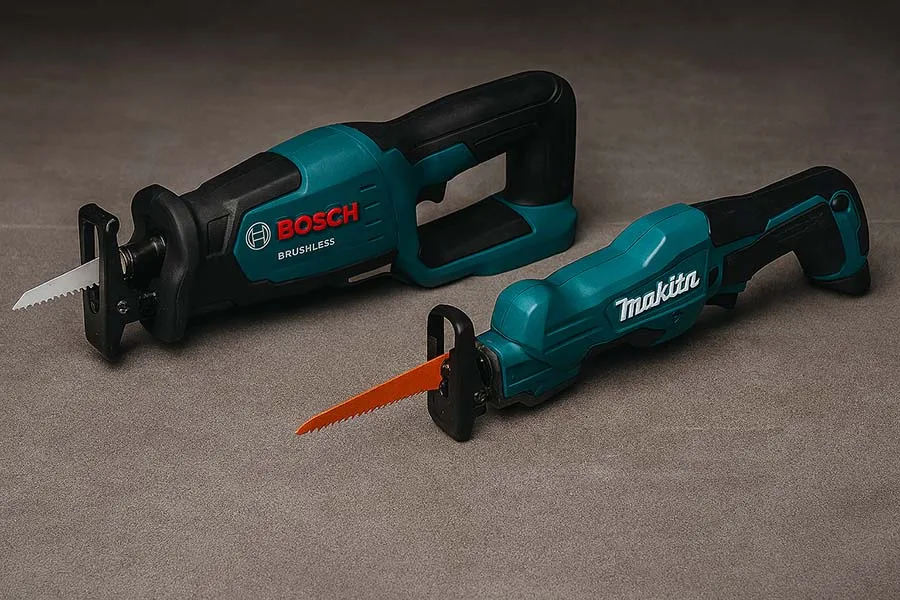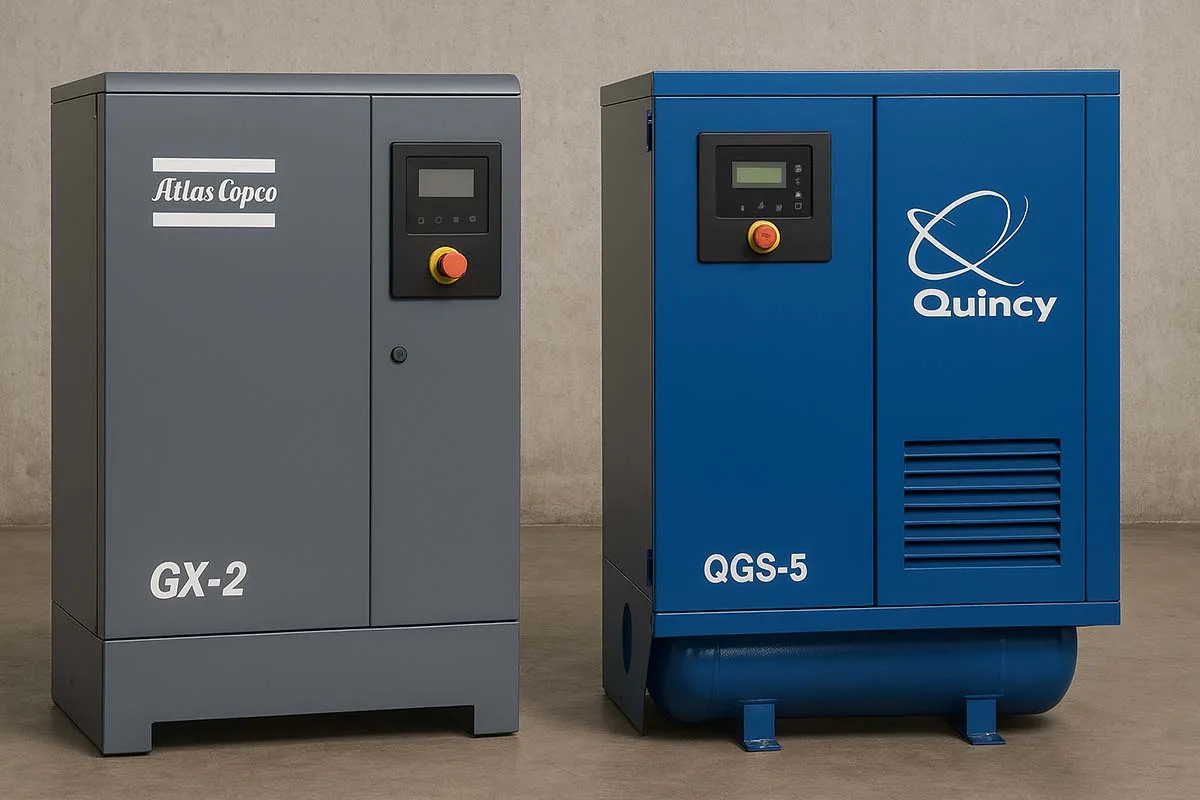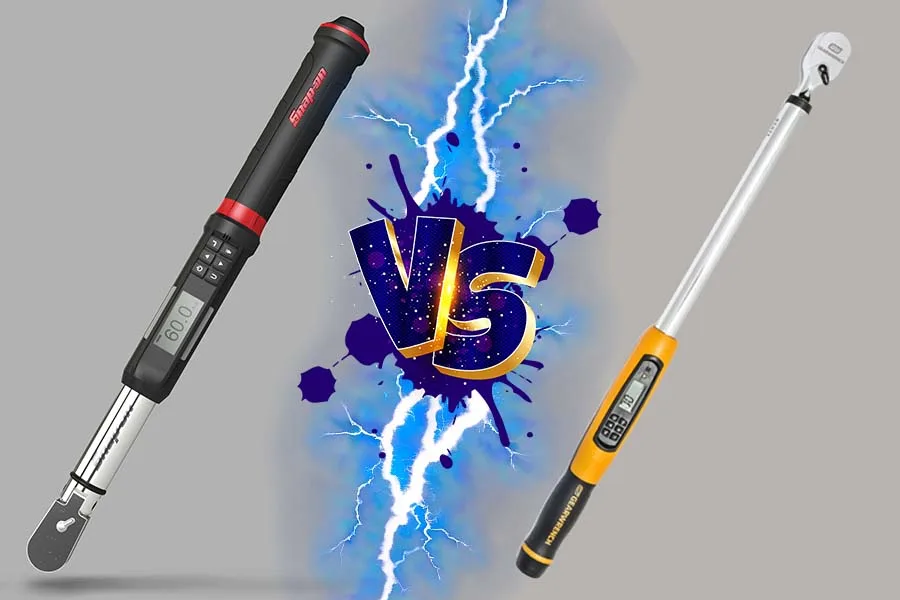Why Compare These Two Cutters?
Bosch’s BGHS310 and Makita’s DJR185Z are both compact, cordless reciprocating saws designed for professionals who need speed, precision, and portability. Whether you’re cutting sheet metal, PVC, or composite panels, these tools promise fatigue-free handling and reliable performance. But which one truly fits your workflow?
This comparison breaks down their specs, strengths, and ideal use cases—so you can choose with confidence and avoid costly mismatches.
Side-by-Side Feature & Specification Breakdown
| Feature | Bosch BGHS310 | Makita DJR185Z |
|---|---|---|
| Motor | Brushless | Brushed |
| Stroke Rate | 0–3,400 SPM | 0–3,000 SPM |
| Cutting Depth | ~8 mm | ~10 mm |
| Weight | 1.9 kg | 1.5 kg |
| Battery Platform | Bosch 18V | Makita LXT 18V |
| Blade Clamp | SDS Quick-Change | Tool-less Lever Clamp |
| Best Use | Sheet metal, plastics | PVC, light metal, wood |
| Vibration Control | Moderate | Good |
| Warranty | 3 years (with registration) | 3 years (with registration) |
Strengths & Weaknesses
🔵 Bosch BGHS310
Strengths:
- High stroke rate for faster cuts
- Brushless motor = longer lifespan
- Excellent for sheet metal and plastics
- SDS blade system is fast and secure
Weaknesses:
- Slightly heavier
- Less effective on wood or thick PVC
- Higher price point
🔷 Makita DJR185Z
Strengths:
- Lightweight and compact
- Great for PVC and light-duty tasks
- Affordable entry point
- Compatible with wide Makita ecosystem
Weaknesses:
- Brushed motor = more wear over time
- Lower stroke rate
- Less ideal for metal-heavy tasks
Verdicts by Category
| Category | Winner | Why |
|---|---|---|
| Price | Makita DJR185Z | Lower cost, great value for light-duty use |
| Durability | Bosch BGHS310 | Brushless motor and build quality |
| Accuracy | Bosch BGHS310 | Higher stroke rate and blade stability |
| Ease of Use | Makita DJR185Z | Lightweight and intuitive clamp system |
| Battery Ecosystem | Tie | Both platforms are widely supported |
| Best for Metal Work | Bosch BGHS310 | Optimized for sheet metal |
| Best for PVC & Wood | Makita DJR185Z | Smoother cuts in softer materials |
Best Fit by Industry or Buyer Type
- HVAC Technicians → Bosch BGHS310 (metal ducts, overhead cuts)
- Plumbers & Installers → Makita DJR185Z (PVC, tight spaces)
- DIYers & Light Trades → Makita DJR185Z (budget-friendly, versatile)
- Industrial Field Techs → Bosch BGHS310 (durability, speed)
- Tool Ecosystem Loyalists → Choose based on your battery platform
Bosch BGHS310 vs Makita DJR185Z FAQ
Did You Know?
Interesting Fact: Bosch’s BGHS310 was co-developed with field technicians to optimize blade angle for overhead metal cuts.
Lesser-Known Fact: Makita’s DJR185Z is one of the few compact reciprocating saws that fits in a standard tool pouch—making it a favorite among mobile installers.
Further Read
Conclusion: Which Cutter Wins?
Both tools serve different missions. Bosch BGHS310 is a powerhouse for metal and durability, while Makita DJR185Z is a nimble, budget-friendly cutter for PVC and light-duty work. Your choice depends on your materials, workflow, and battery loyalty.
Which one fits your toolkit? Drop a comment below and share your experience. If this guide helped you, pass it on to your crew or share it on social media—it might save someone a costly mismatch.





